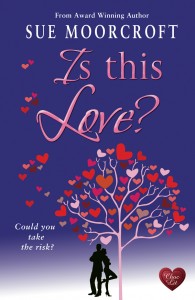Show Don’t Tell: The Page Is A Stage
 It’s as if editors believe they’re tutors when they return your work with, ‘Show, don’t tell!’
It’s as if editors believe they’re tutors when they return your work with, ‘Show, don’t tell!’
And you think, ‘I wish I could get some real feedback.’ But, in my opinion, they’re giving you really good advice.
Think of a play. Actors are on the stage, but there’s a narrator at the side. The narrator tells the audience what’s happened; she’s a shortcut to dumping information. But it’s far more involving to see the actors acting, right there in front of us, on stage. Think of your characters as the actors, the writer as the stage-side narrator – and try and keep the latter quiet.
Example:
This is how the writer might tell us something: Mandy loves dogs.
All you have to do to show us the same thing is have Mandy stroking her dog and the dog gazing at her adoringly.
 Or, Mandy was furious – so let’s see her eyes flashing as she tosses her hair! And remember that actors speak their lines: ‘Since when did you have the right to …?’ You’ll get pace, story, tension, character development, drama… because you made Mandy act out the scene. You put the action on stage.
Or, Mandy was furious – so let’s see her eyes flashing as she tosses her hair! And remember that actors speak their lines: ‘Since when did you have the right to …?’ You’ll get pace, story, tension, character development, drama… because you made Mandy act out the scene. You put the action on stage.
But how do you know how Mandy’s going to act? You make certain you understand her motivation. If Mandy puts her hand on something hot and snatches it away, pain has motivated her action. But less obvious pain, actual or emotional, is often buried in a character’s motivation, somewhere.
She tells her boyfriend she’s unwilling to commit to marriage? It’s because her parents’ marriage was a battleground. Make her boyfriend react, and your plot’s being acted out via action, reaction and interaction.
You can improve your characters’ acting abilities by making vivid verb choices. Mandy walked from the room. Walk is bland. Trail, burst, whisk, stalk, slam, trudge, there are lots of verbs you can utilise to move Mandy out of that room, and each one lets us share her mood.
 You can also share her perceptions and experiences. It was hot in the kitchen. Sometimes that’s enough. But if you relate the heat to the character, it will be more involving. It doesn’t really matter whether you say:
You can also share her perceptions and experiences. It was hot in the kitchen. Sometimes that’s enough. But if you relate the heat to the character, it will be more involving. It doesn’t really matter whether you say:
Mandy turned up the range cooker, glad to bring the temperature to tropical.
Or: Slaving over the range cooker was like being hit with hot metal. Mandy yearned for air conditioning.
You’ve used her senses and engaged her feelings, so we’ll experience the heat with her.
Should you never tell?
Telling can get information over in a few words and lead us from background information to the meat of the story: Robbie, Jon’s best friend, had made a heavy pass at Mandy, is quite acceptable, to me.
But even that you could pass through Mandy’s thoughts … Mandy couldn’t bring herself to tell Jon about the heavy pass his friend Robbie had made. Jon thought the sun shone from Robbie’s ears. Because then we’re experiencing the story with the character, not being told it by the writer.
—
Sue Moorcroft writes romantic novels of dauntless heroines and irresistible heroes. Her latest book, Is this Love? was nominated for the Readers’ Best Romantic Read Award. Love & Freedom won the Best Romantic Read Award 2011 and Dream a Little Dream was nominated for a RoNA in 2013. She received three nominations at the Festival of Romance 2012, and is a Katie Fforde Bursary Award winner. She’s vice chair of the RNA and editor of its two anthologies, published by Harlequin.
Sue also writes short stories, serials, articles, writing ‘how to’ and is a competition judge and creative writing tutor.
Visit her website www.suemoorcroft.com and blog suemoorcroft.wordpress.com
Sue is also on Twitter @suemoorcroft and on facebook
Category: Contemporary Women Writers, How To and Tips




Great article!
I think the key aspect of “show not tell” is in terms of character emotions/motivations – telling is fine often within expository sections.
One big editing error to mention – in the title, the I should be capped since Is is a verb.
Show don’t tell seemed like secret code to me when I was a novice. Took me a while to understand how use of specific details reveals character, setting, and moves plot. Straightforward articles like this were a big help.
Best,
Carol
This is one of the best “How to” posts on Showing vs. Telling I’ve read. Clear and succinct with great examples. Thank you!
Thank you, Natalie. 🙂
I loved this post. I’ve been reading up on showing versus telling a lot lately because I keep hearing it repeatedly said, “show them, don’t tell them”. The problem is that nobody is really saying in simple terms what all this means. Thanks for breaking it down in such a visual way. Now, I know I’ll never forget – actors vrs stage-side narrator. Thanks Sue!
Glad to help, Nyarkoa. Thanks for such a nice comment. 🙂
Thank you so much for addressing this topic. It’s the key! I’ve been noticing how a number of strong writers had a background in theater.
Just as one example. Madeline Miller’s Song of Achilles won the Orange Prize. I’d seen her read at a Gaithersburg Maryland USA book festival. She’s got a background in theater.
– Anora
Thanks for your comment Anora. I believe that people in theatre are usually good at dialogue, too. I have a couple of writer friends who are actresses and are both good at visualising entire plots. 🙂